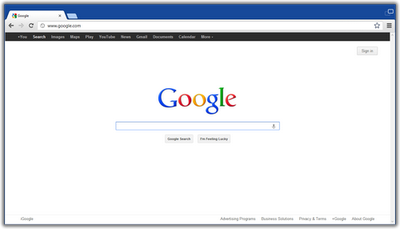Google teases upcoming release of Metro-enabled Chrome browser

It’s no secret that Google and Mozilla find themselves in the unusual position of playing catch-up to Microsoft in the race to develop a Metro-enabled browser that will run on Windows 8.
Back in March, Google confirmed that it had begun work on a Metro-enabled desktop browser. Today, in a post on the Chromium blog, Google’s Carlos Pizano announced that the Metro code will be available in the next Chrome Dev channel release.
The post doesn’t say exactly when the new code will be released, but Google’s documentation for the Dev channel notes that new builds are typically made available “once or twice a week.”
To test the Chrome version of Metro you’ll need to be running the Windows 8 Release Preview. In addition, enabling the Metro version requires that Chrome be set as the default. That’s a common requirement for all products in the unusual ““Metro style enabled desktop browser” category.
Google says its initial Metro implementation will improve over time:
The initial releases of Chrome in Metro mode will include integration with the basic Windows 8 system functionality, such as charms and snap view. Over the next few months, we’ll be smoothing out the UI on Metro and improving touch support, so please feel free to file bugs. We’re committed to bringing the speed, simplicity, and security of Chrome into Windows 8, and we look forward to working with you on it.
The post included a single screen shot, which looks remarkably similar to the current desktop release of Chrome:
And, of course, because this is Google, the requisite wacky job title is on display: Pizano listed his title as “Software Engineer and Metro Gnome.”
The post does contain one backhanded swipe at Microsoft. In an explanation of why this upcoming release is a desktop browser that includes Metro functionality, Pizano writes:
Chrome won’t run in WinRT, i.e. Windows 8 on ARM processors, as Microsoft is not allowing browsers other than Internet Explorer on the platform.
The link in that sentence goes to a post on the Mozilla blog, which offers a more nuanced (and accurate) interpretation of the problem with third-party browsers on Windows RT:
Windows on ARM prohibits any browser except for Internet Explorer from running in the privileged “Windows Classic” environment. In practice, this means that only Internet Explorer will be able to perform many of the advanced computing functions vital to modern browsers in terms of speed, stability, and security to which users have grown accustomed. Given that IE can run in Windows on ARM, there is no technical reason to conclude other browsers can’t do the same.
Why does this matter to users? Quite simply because Windows on ARM -as currently designed- restricts user choice, reduces competition and chills innovation. By allowing only IE to perform the advanced functions of a modern Web browser, third-party browsers are effectively excluded from the platform.
Google and Mozilla can, if they choose, build browsers for Windows RT. But those browsers would lack the ability to execute JavaScript efficiently, they would be prevented from using plugins, and they would have to be approved by Microsoft and delivered through the Windows app store.
As I noted last month, "At this late date, the likelihood that Microsoft will change the architecture of Windows RT to allow Firefox and Chrome onto the desktop is zero." Google and Mozilla are, meanwhile, pressing on with their projects for traditional x86/x64 PCs running Windows 8.
See also:
- Mozilla and Google accuse Microsoft of unfair browser competition
- Google paying Mozilla $300 million per year for search deal
- Mozilla begins development of Firefox for Metro
- Google joins Windows 8 browser war with plans for Metro Chrome
- CNET: Microsoft bans Firefox on ARM-based Windows, Mozilla says
- CNET: Google agrees with Mozilla’s Windows RT browser concerns
